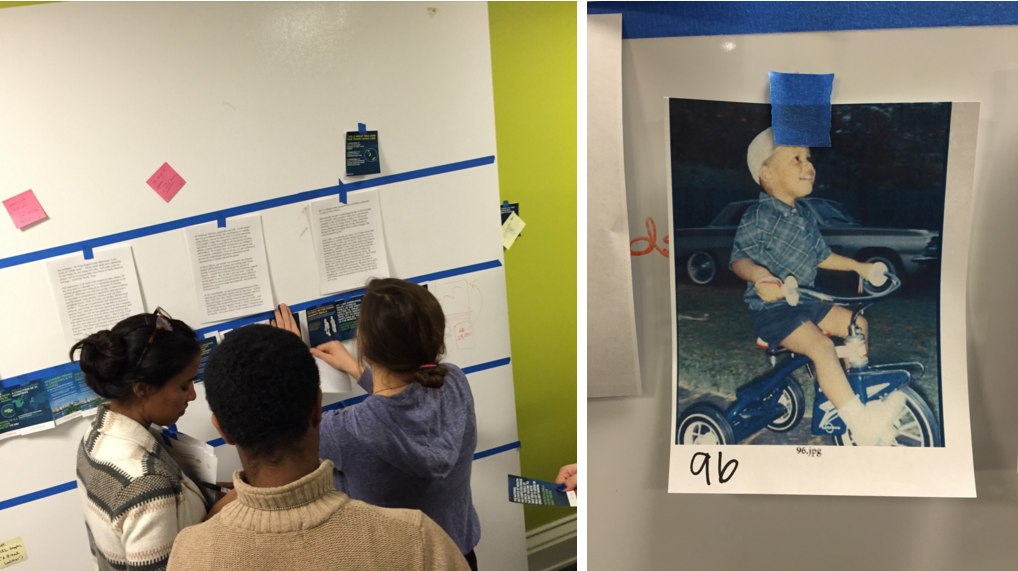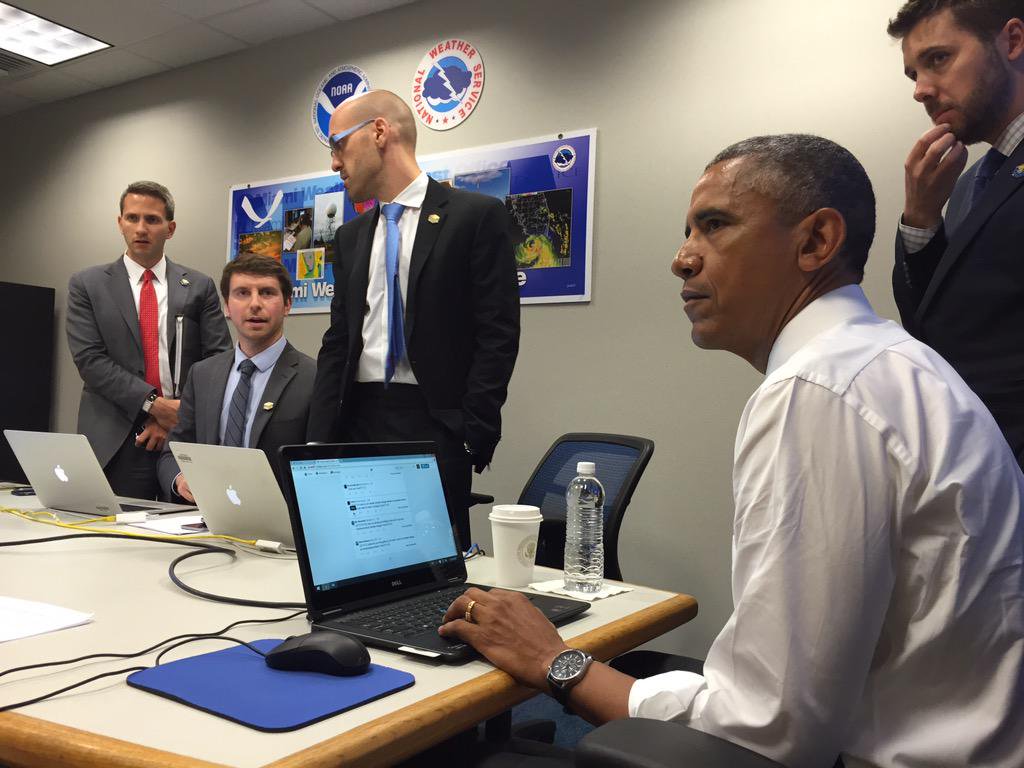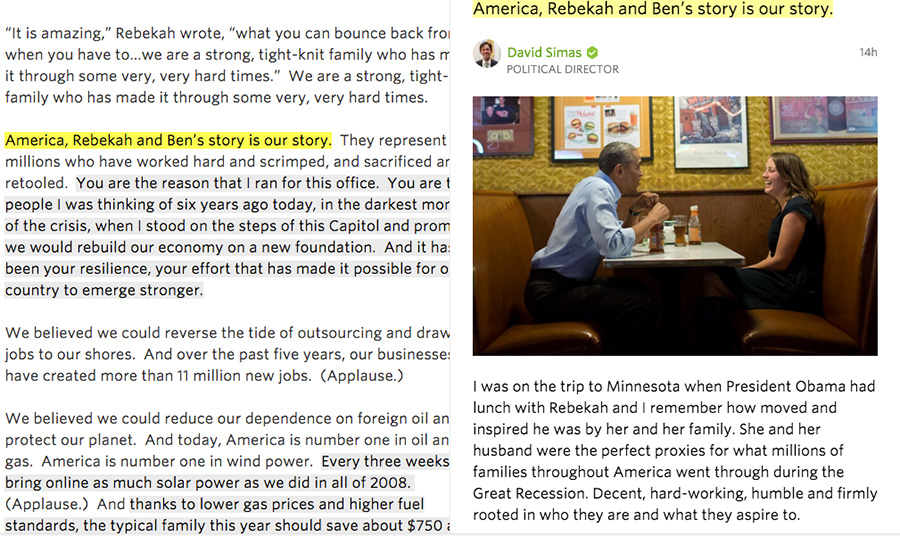

How the White House Office of Digital Strategy is preparing for the 2016 State of the Union Address
Like President Obama, we view change as an opportunity to create new things. To do big things. And like the President, we’re approaching the future with optimism.
On Tuesday, the American people will see a multi-platform streaming and social broadcast of the State of the Union that reflects the ways people experience live events in 2016. We’ll be reaching people where they are — and making it possible for them to engage, respond, and share the President’s speech themselves in new and different ways.
I want to share some of the specifics about what that looks like this year.
HOW THE STATE OF THE UNION HAS BEEN DELIVERED
Article II, Section 3 of the Constitution tells us this: The President “shall from time to time give to the Congress Information of the State of the Union.”
You’ll notice that exactly how the President is supposed to share the State of the Union (SOTU) is left unspecified. In 1801, Thomas Jefferson decided that speeches were too “inconvenient” and redolent of the monarchy, so he started sending reports instead. It was Woodrow Wilson in 1913 who once again directly addressed Congress in person. And ten years later, Calvin Coolidge’s voice reverberated through living rooms across the country as the address was broadcast on radio for the first time. Looking at other SOTU firsts, we see the evolution of media in the 20th Century:
- First TV broadcast took place when President Harry Truman was in office in 1947
- First president to deliver the speech in primetime was Lyndon Johnson in 1965
- First live webcast on the Internet happened in the President George W. Bush administration in 2002
- First high definition television broadcast of the address also took place under George W. Bush in 2004
- First enhanced State of the Union live stream: President Obama, 2011

So here we are. 2016. America’s media landscape is more diverse than ever before. We’re seven years out from President Obama’s first address to a joint session of Congress in 2009 — when the phrase “two-screen experience” would have made no sense, “binge-watching” wasn’t yet a thing, and the White House had yet to publish a tweet. The work of the team I lead at the White House was still known as “new media.”
Around this time each year, our job in the Office of Digital Strategy has been to find new or expanded ways for the American people to engage with the President’s address. That means meeting people where they are — and in this day and age, that starts by recognizing that even people following on two screens don’t just flip back and forth between a TV and a smartphone. We jump from different social media platforms — and we have shifting assumptions about the type of experience we’ll have on each.
HERE’S WHAT WE’RE DOING DIFFERENTLY THIS YEAR
Content delivered how and when you want it

So what does it mean to “meet people where they are?” First, it means recognizing the massive shift in the American media diet toward on-demand video. For the first time, this year SOTU will be available to stream on-demand on Amazon Video, in addition to on wh.gov/sotu and our YouTube channel. And beginning Wednesday through the end of the week, Amazon will make the speech available across all devices for Americans to watch the State of the Union in the same way we’re used to consuming video content in 2016. So, for those who’ve cut the cord from cable and network TV: Whether you use a smart TV, web browser, mobile device, or tablet there’s a way for you to watch the President’s speech as it happens and on-demand.
And as in past years, you’ll be able to watch video excerpts released in real-time on Facebook and Twitter. From live GIFs on Tumblr to 6-second videos on Vine and photos on Instagram, we’ll build on previous efforts to connect with users across a range of social media sites and make the experience of the speech appropriate to each platform.
Pre-speech context and updates

Right now, you can explore the President’s seven previous State of the Union addresses with line-by-line annotations that offer more context on specific proposals he made and a behind-the-scenes look at how those speeches came together. You can also share your thoughts and reactions with us, and some of your submissions may be highlighted. You can watch those speeches too, if the mood strikes. As part of their SOTU coverage, Amazon Video has made all of President Obama’s past State of the Union addresses available, so you can watch them through their apps as well as on our YouTube channel.
Together, we’ve accomplished a lot over the past seven years, and there are a number of interesting people around who played a real part in that progress. If you tune in early to wh.gov/SOTU on the night of the speech we’ll feature some of the voices that have been with President Obama since the start, like Edith Childs who first got him “fired up.” And we’ll also have special guests including, Terrence J, Wale and Matt Berninger and Brent Knopf of EL VY.
Creating opportunities for engagement after the State of the Union
For those who want to join the conversation, on Wednesday the White House will be hosting our third annual Big Block of Cheese Day. (If you’re not a West Wing fan, you can get some context here.) Throughout the day, more than 50 administration officials will answer your questions on Twitter — including the First Lady, the Vice President, Energy Secretary Ernest Moniz, and Acting Secretary of Education John King. Check out the full schedule and join the conversation with #BigBlockOfCheeseDay.
Stay tuned as we continue to share information about the 2016 State of the Union, and all the ways you can engage with the speech, here.
HERE’S WHAT PRESIDENT OBAMA IS DOING DIFFERENTLY THIS YEAR
The President himself is changing the way he delivers the address this year. Instead of laying out a laundry list of policy proposals for 2016, he’ll look beyond the next election and instead talk about some of the most important issues that will shape our country for generations to come.
You’ll often hear discussion about how to “break through the clutter” online — the premise being that the conversation online gets necessarily dumbed down. Now, there’s a lot of valid criticism about all the noise in online media, and the risks — but there are countless examples of people embracing the clutter and using the Internet to come together to make positive change. We believe that by “broadcasting” the State of the Union across social media and streaming video platforms we are helping American citizens connect to the government that serves them.
In a preview video about the State of the Union, President Obama said: “I don’t think I’ve ever been more optimistic about a year ahead.” He also said, “This address will be for you.” We’ve taken both of these messages to heart, in an effort to meet people where they are.
So make plans to watch the speech, watch this trailer to get prepared, and on Tuesday get cozy with your favorite internet-connected device. And finally, keep engaging with the White House: We’re listening.
Stay tuned for more ways in the coming days to engage around President Barack Obama’s final State of the Union Address at 9:00PM EST on Tuesday night, January 12, 2016.


